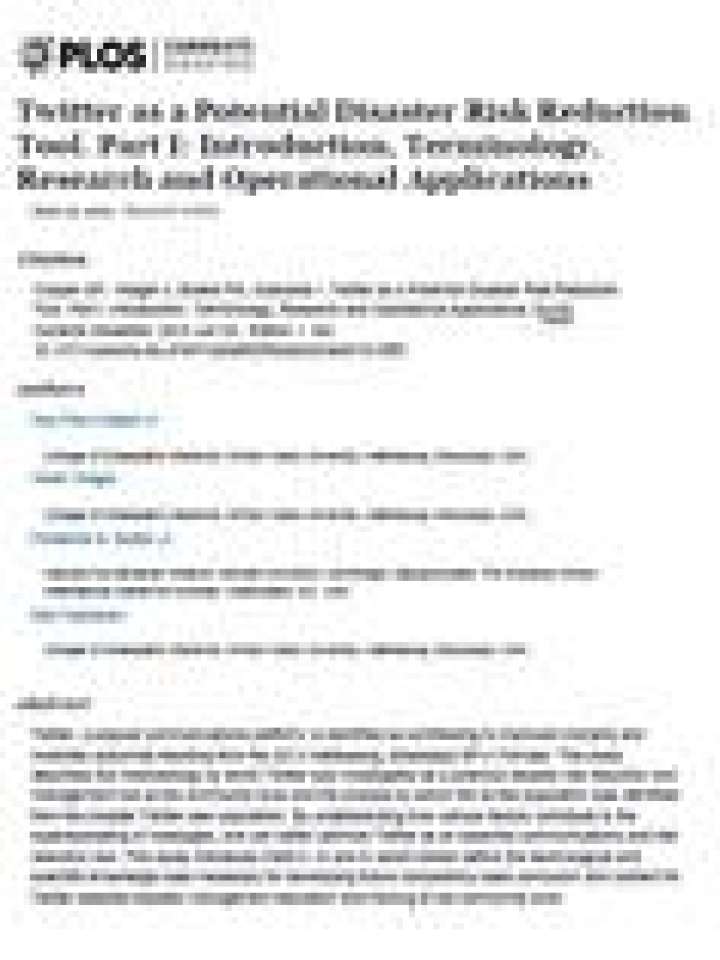Twitter as a potential disaster risk reduction tool
PLOS Currents Disasters. 2015 Jun 29 . Edition 1.
Part I: doi: 10.1371/currents.dis.a7657429d6f25f02bb5253e551015f0f
Part II: doi: 10.1371/currents.dis.f2e5b9e979af6174d2f97c1f0349be5c
Part III: doi: 10.1371/currents.dis.b305fe1b479528fda724c6f84f546471
Part IV: doi: 10.1371/currents.dis.ce3fad537bd666770a649a076ee71ba4
This four-part study examines Twitter as a viable communications tool at the community level during crisis events with potential for disaster risk reduction and management, and establishes an evidence-based technological science and knowledge base necessary for community-level replication and education and training of this communications tool.
Part I describes the methodology by which Twitter was investigated as a potential disaster risk reduction and management tool at the community level and the process by which the at-risk population was identified from the broader Twitter user population.
Part II analyzes the effectiveness of Twitter as a disaster risk reduction tool in mitigating morbidity and mortality. It part describes the detailed methodological application of the novel triangulation methodology used to filter the ‘haystack’ of tweets transmitted during the 2013 Hattiesburg Tornado among those captured from the over 2 billion tweets in the 96 hour window of the storm that were emitted on the Twitterverse.
Part III describes the ‘needle in the haystack’ itself by identifying the Top 100 Twitter Users that were re-tweeted 48 hours pre- and post -tornado and analyzing the significant statistical relationship between metadata variables and in particular disaster-related hashtags to the users themselves.
Part IV looks at the potential of Twitter to be an effective and efficient community-based communications tool for disaster risk reduction and management and the skills required for people to utilize Twitter effectively during a disaster or public health emergency range from effective tweet-based communication, including modifiers and hashtags, computer programming, health informatics, and statistical analysis.
Explore further
